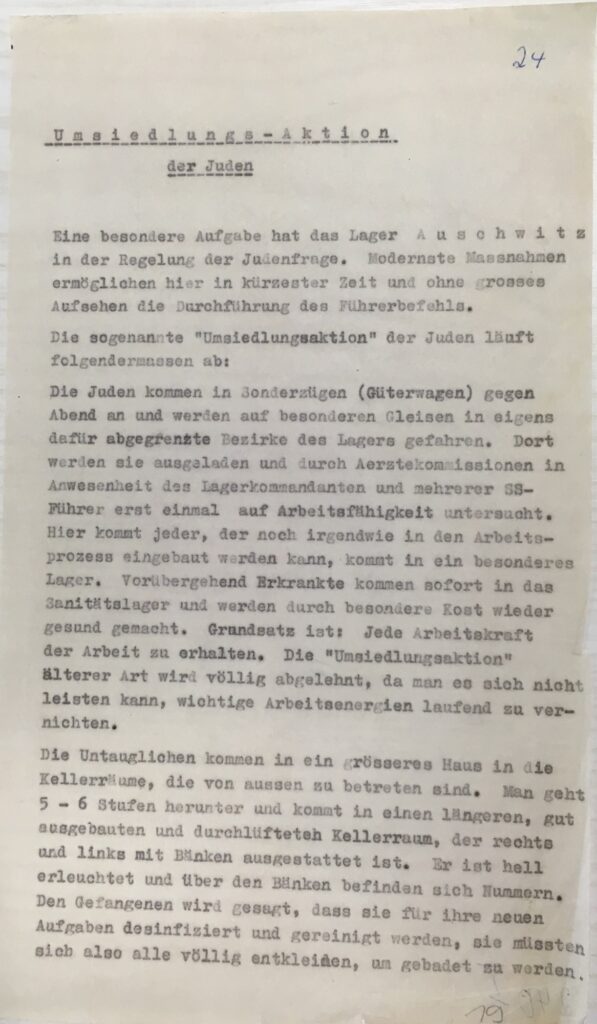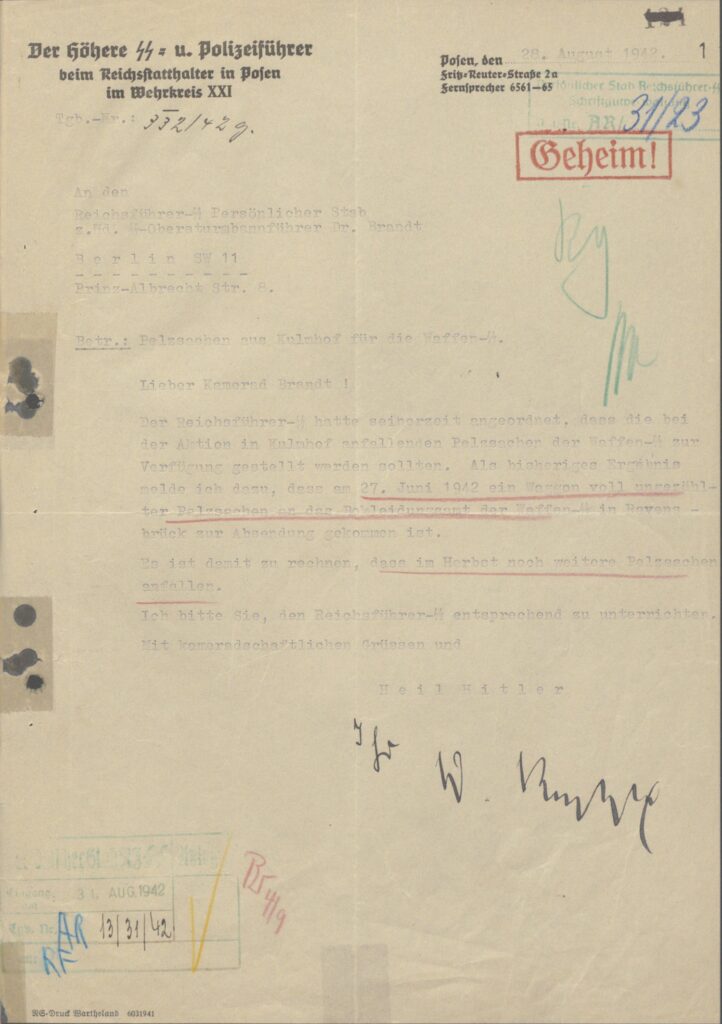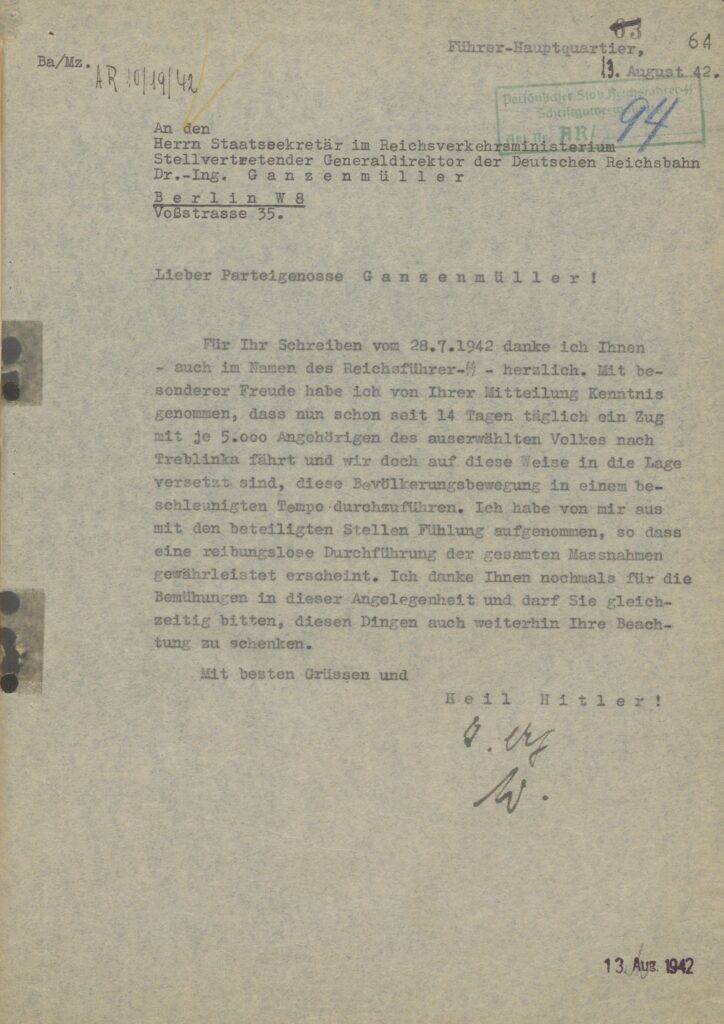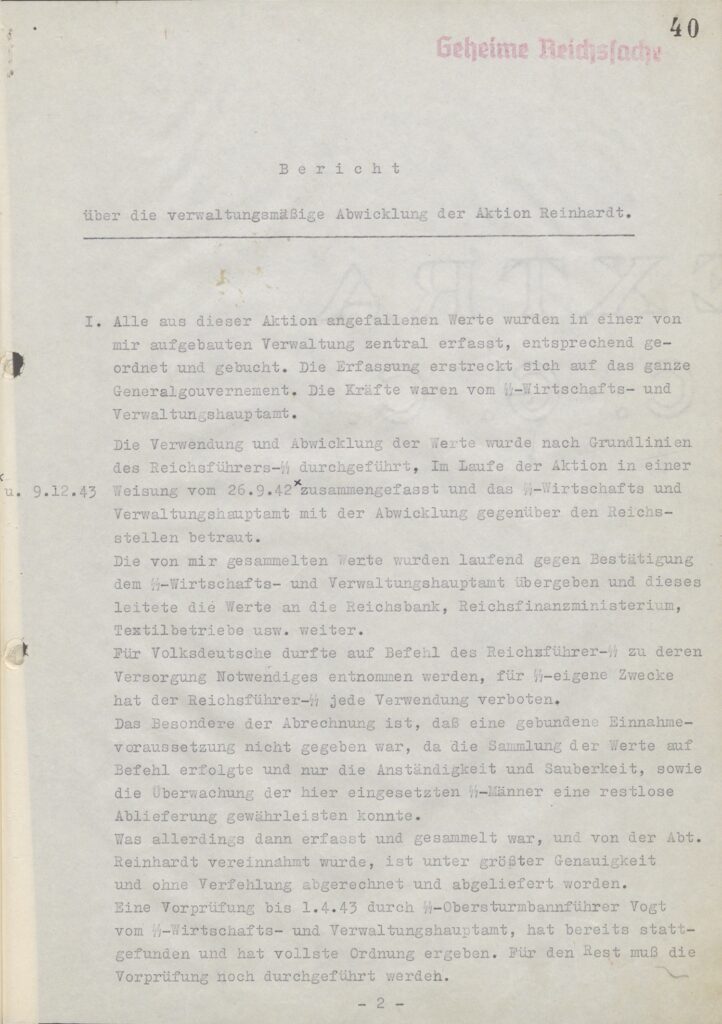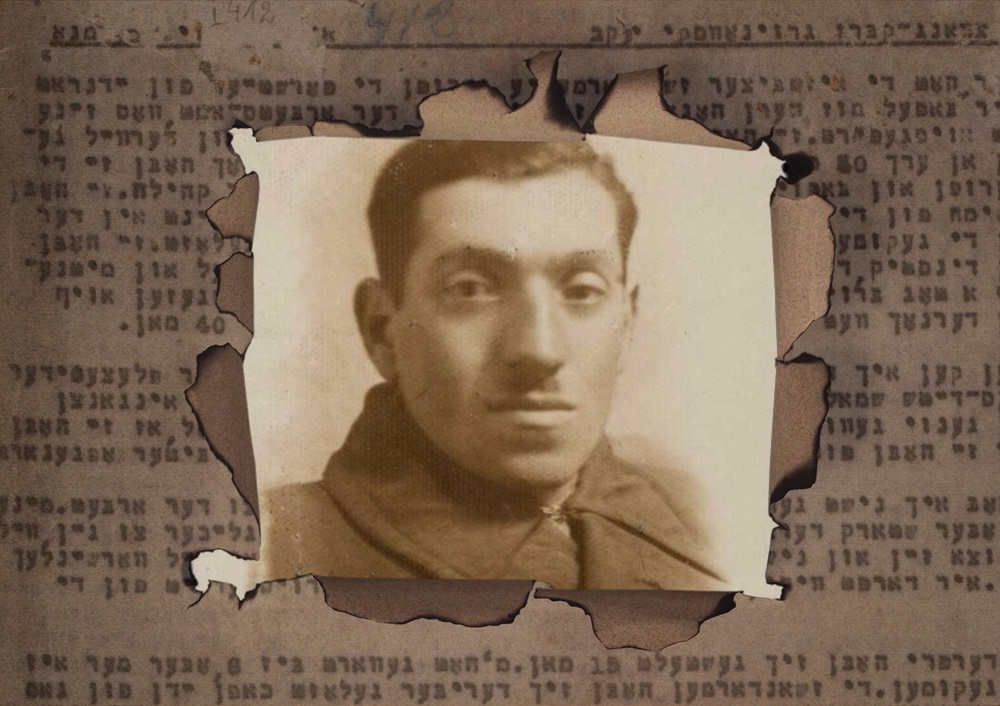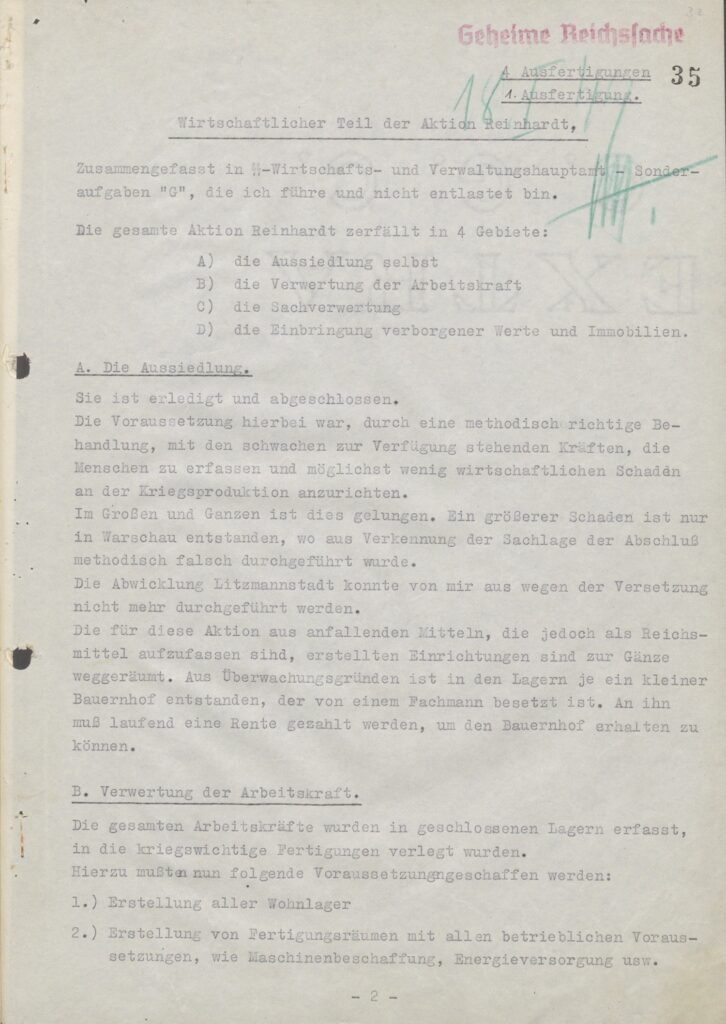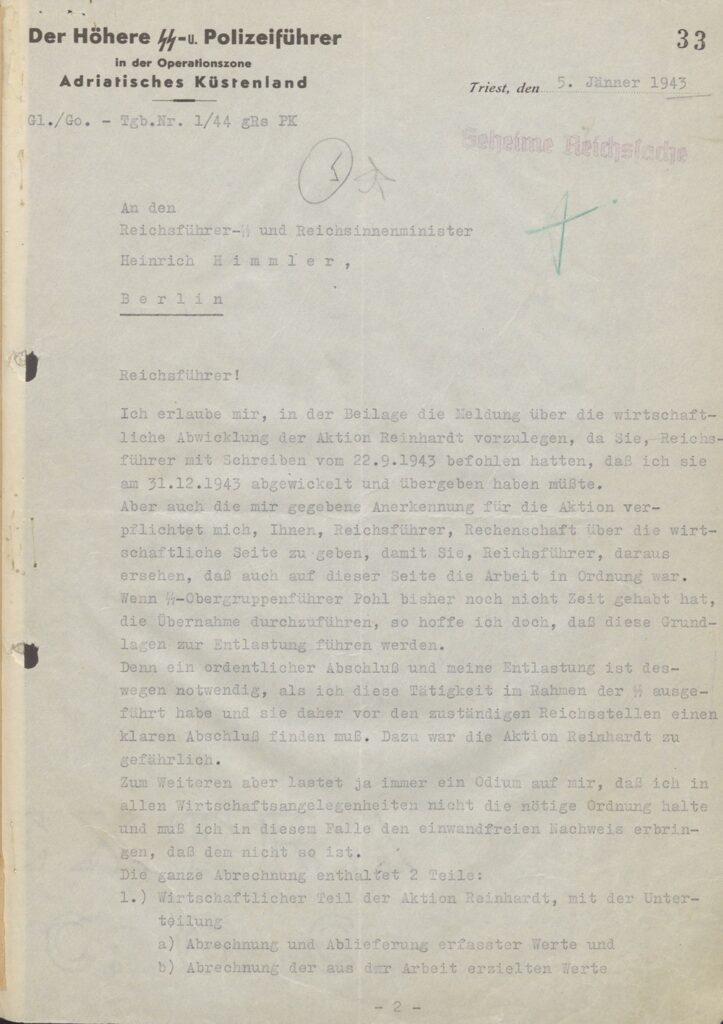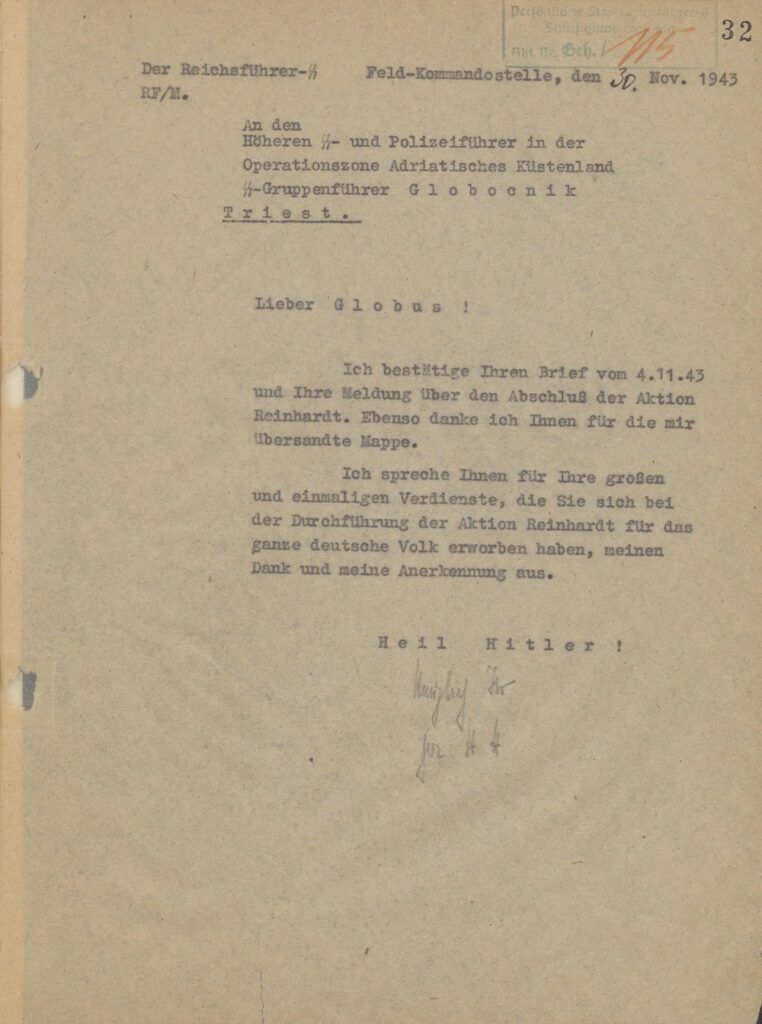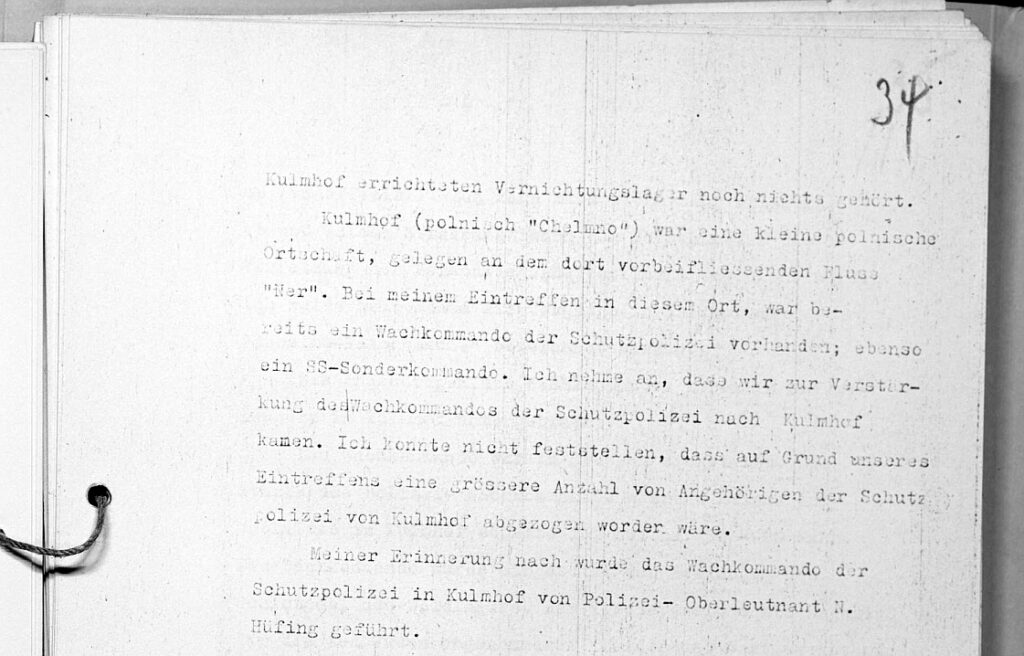Odilo Globocnik’s report, enclosed in his January 5, 1944 letter to Reichsführer-SS Heinrich Himmler, details the “administrative processing of Operation Reinhardt”. Globocnik highlighted that “all assets accrued from this operation were centrally recorded, organized, and booked by an administration set up by me.” These assets included large quantities of Reichsmarks, Zloty, jewelry, and clothing, which were primarily transferred to the state institutions. Globocnik estimated the total value of these assets to be minimum “approximately 180,000,000 Reichsmarks,” with “over 1,900 wagons delivered to the German industry alone.” As most Jews deported during Operation Reinhardt were murdered in the death camps at Belzec, Sobibor, and Treblinka, even “their food, transported with them, was used to supply Jewish camps.
